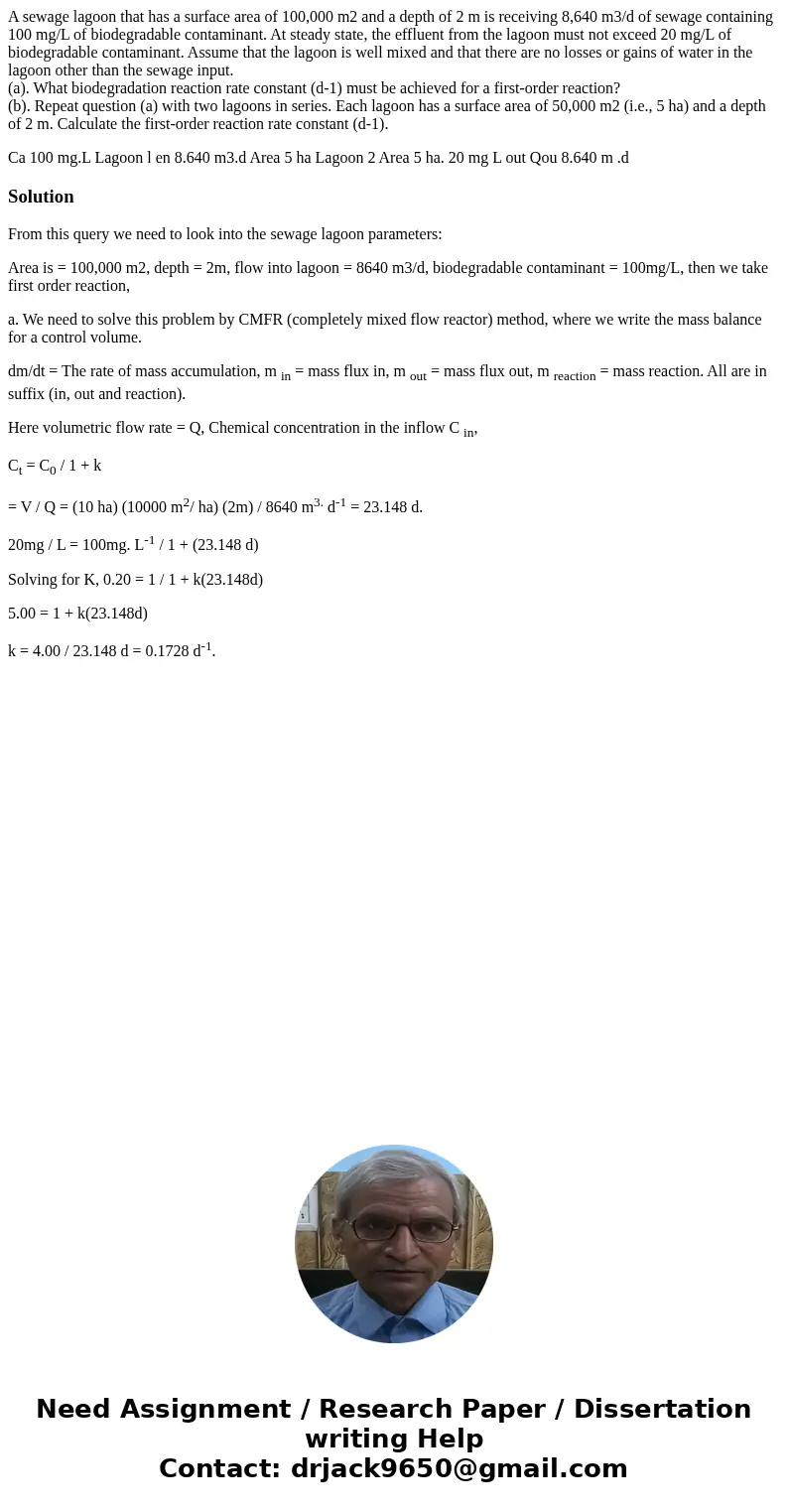A sewage lagoon that has a surface area of 100000 m2 and a d
A sewage lagoon that has a surface area of 100,000 m2 and a depth of 2 m is receiving 8,640 m3/d of sewage containing 100 mg/L of biodegradable contaminant. At steady state, the effluent from the lagoon must not exceed 20 mg/L of biodegradable contaminant. Assume that the lagoon is well mixed and that there are no losses or gains of water in the lagoon other than the sewage input.
(a). What biodegradation reaction rate constant (d-1) must be achieved for a first-order reaction?
(b). Repeat question (a) with two lagoons in series. Each lagoon has a surface area of 50,000 m2 (i.e., 5 ha) and a depth of 2 m. Calculate the first-order reaction rate constant (d-1).
Solution
From this query we need to look into the sewage lagoon parameters:
Area is = 100,000 m2, depth = 2m, flow into lagoon = 8640 m3/d, biodegradable contaminant = 100mg/L, then we take first order reaction,
a. We need to solve this problem by CMFR (completely mixed flow reactor) method, where we write the mass balance for a control volume.
dm/dt = The rate of mass accumulation, m in = mass flux in, m out = mass flux out, m reaction = mass reaction. All are in suffix (in, out and reaction).
Here volumetric flow rate = Q, Chemical concentration in the inflow C in,
Ct = C0 / 1 + k
= V / Q = (10 ha) (10000 m2/ ha) (2m) / 8640 m3. d-1 = 23.148 d.
20mg / L = 100mg. L-1 / 1 + (23.148 d)
Solving for K, 0.20 = 1 / 1 + k(23.148d)
5.00 = 1 + k(23.148d)
k = 4.00 / 23.148 d = 0.1728 d-1.

 Homework Sourse
Homework Sourse